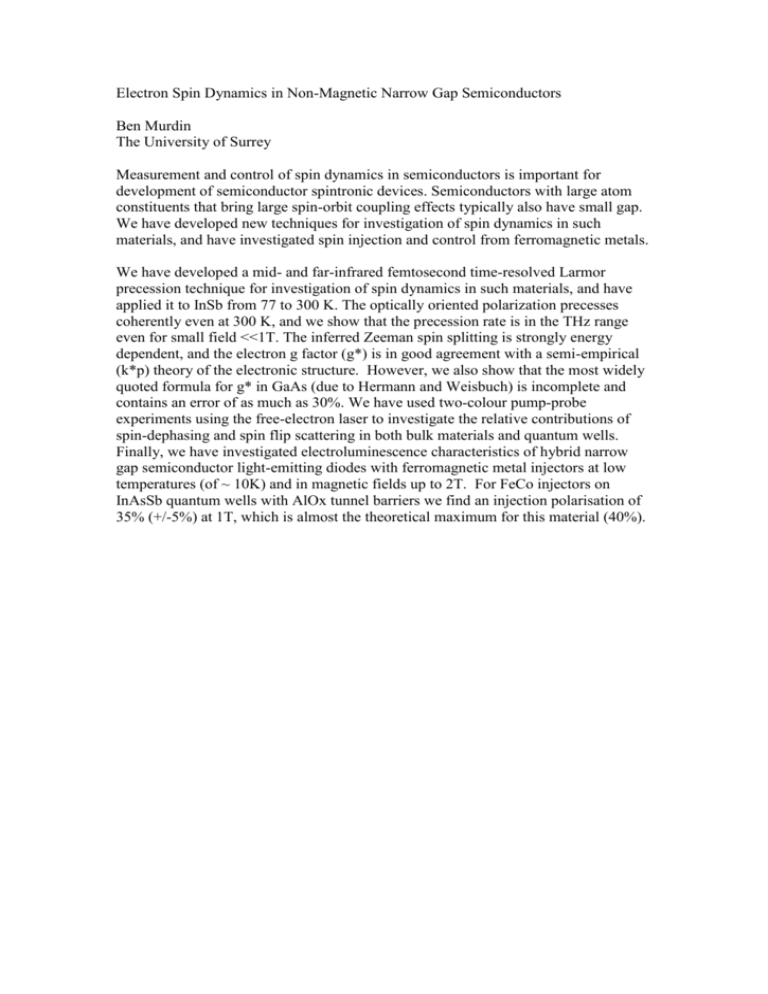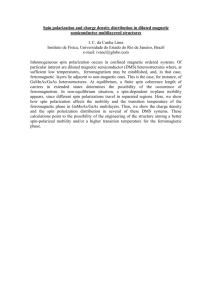Electron Spin Dynamics in Non-Magnetic Narrow Gap Semiconductors
advertisement

Electron Spin Dynamics in Non-Magnetic Narrow Gap Semiconductors Ben Murdin The University of Surrey Measurement and control of spin dynamics in semiconductors is important for development of semiconductor spintronic devices. Semiconductors with large atom constituents that bring large spin-orbit coupling effects typically also have small gap. We have developed new techniques for investigation of spin dynamics in such materials, and have investigated spin injection and control from ferromagnetic metals. We have developed a mid- and far-infrared femtosecond time-resolved Larmor precession technique for investigation of spin dynamics in such materials, and have applied it to InSb from 77 to 300 K. The optically oriented polarization precesses coherently even at 300 K, and we show that the precession rate is in the THz range even for small field <<1T. The inferred Zeeman spin splitting is strongly energy dependent, and the electron g factor (g*) is in good agreement with a semi-empirical (k*p) theory of the electronic structure. However, we also show that the most widely quoted formula for g* in GaAs (due to Hermann and Weisbuch) is incomplete and contains an error of as much as 30%. We have used two-colour pump-probe experiments using the free-electron laser to investigate the relative contributions of spin-dephasing and spin flip scattering in both bulk materials and quantum wells. Finally, we have investigated electroluminescence characteristics of hybrid narrow gap semiconductor light-emitting diodes with ferromagnetic metal injectors at low temperatures (of ~ 10K) and in magnetic fields up to 2T. For FeCo injectors on InAsSb quantum wells with AlOx tunnel barriers we find an injection polarisation of 35% (+/-5%) at 1T, which is almost the theoretical maximum for this material (40%).
![HJi exp [(xb + xa) cos(wot) — 2xbx.])](http://s2.studylib.net/store/data/010971245_1-ca5a45e9550482d4b1daaee0746eb6fa-300x300.png)










